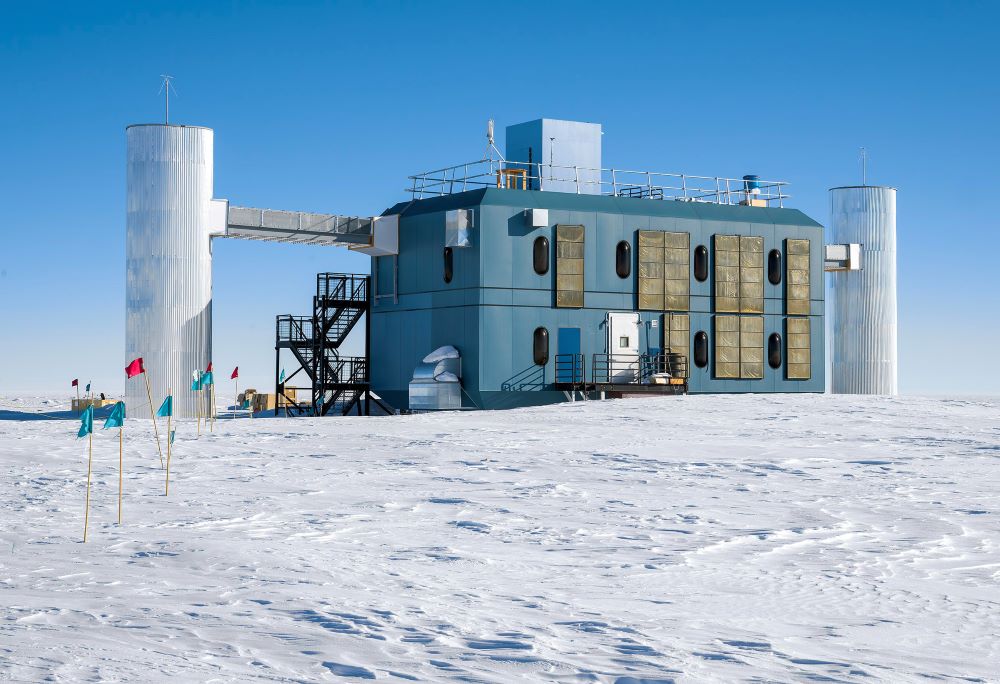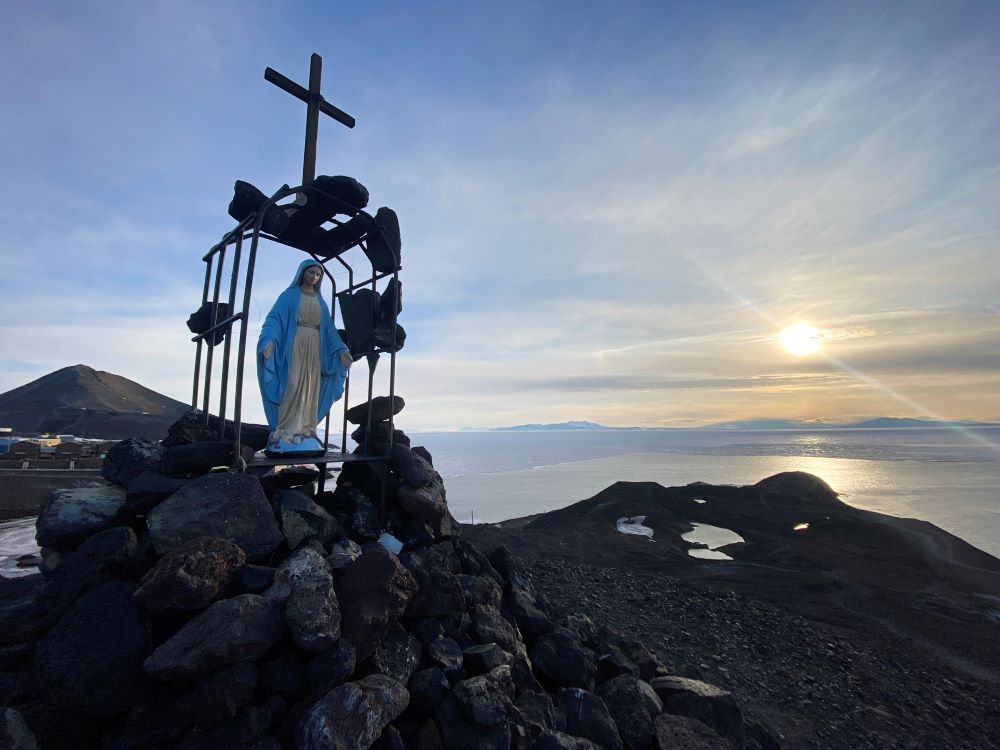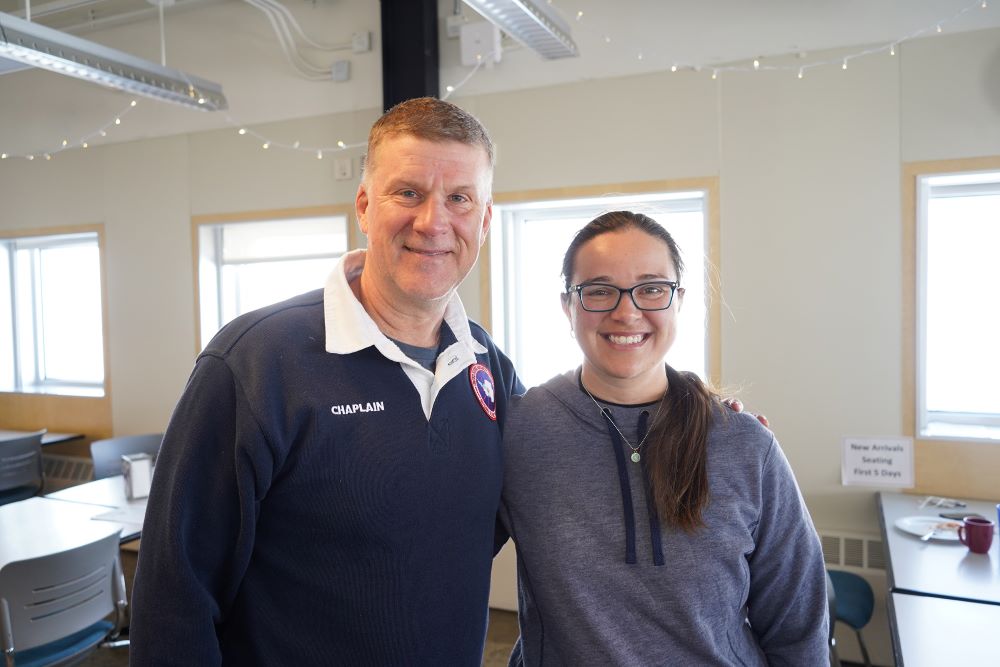
The IceCube Neutrino Observatory on Jan. 6, 2023, at the South Pole Station in Antarctica. (Wikipedia/Christopher Michel)
In preparing to come to Antarctica, I had been told this was the most secular continent in the world, filled with scientists on missions of discovery.
But for those who are looking for spirituality, there is a lot to be discovered here too.
I recently spent three weeks at the South Pole Station at the IceCube Neutrino Observatory, which is looking to detect neutrinos, tiny particles that come from cosmic events in deep space and help us learn more about our universe.
The South Pole Station is akin to a larger, land-based International Space Station. Only about 150 people inhabit a single, two-story building, which means you can get to know pretty much everyone and form an awesome community. The downside is that organized religious gatherings are nearly nonexistent. Holidays like Christmas and Hanukkah are celebrated with fancy dinners from the galley staff, but religious services only happen if you organize them yourself.
McMurdo Station, on the other hand, is more like a small town. Located on the Ross Sea, McMurdo, or "Mactown," is the largest of the U.S. stations and hosts up to 1,000 people during the summer months. McMurdo boasts more "real-world" amenities like a coffeehouse, a recreation department, multiple bars and yes, even a chapel. I got to spend about 10 days in McMurdo Station on my way to and from the South Pole and experienced the religious offerings there.
Advertisement
On my first trip through McMurdo, I was struck by the beauty of the continent, and how every high point on the station was designated with a cross — each one a memorial to those who had died on the continent. The crosses were sobering reminders of the extreme conditions people have faced here, and still do, and how lucky I am to be here. They were also comforting reminders of faith as I adjusted to being thousands of miles away from home and anything familiar. Even from town, I could see the silhouette of crosses against the constantly lit sky and know that someone is looking out for me.
My absolute favorite place on station is the Our Lady of the Snows Shrine on the Hut Point Ridge Trail, affectionately nicknamed "Rollcage Mary" due to the stark metal bars, crowned with a cross, that attempt to protect her from the harsh winds and weather that sweep across the peninsula she sits on. It was a beautiful place to chat and pray. One night, feeling overwhelmed in the bustling McMurdo Station and my crammed isolation quarters, I walked up to Mary and just sat in her shelter, cocooned in my parka, watching the gull-like skuas float on the turbulent airstreams.

"Rollcage Mary" at the top of the Hut Ridge on Hut Point Peninsula, McMurdo Station, Antarctica. (RNS photo/Elaine Krebs)
The very first place I went after arriving at the station was the Chapel of the Snows. It sits prominently at the end of the road overlooking the Ross Sea, with the Royal Society Mountain Range peeking behind on a clear day. You can't miss it. Anyone going to or from the dorms, galley or science lab passes by the unique white and blue building.
The nondenominational Chapel of the Snows was dedicated in 1989 after a previous building burned down. It serves as a gathering and worship space for all residents of McMurdo Station, as well as the nearby New Zealand Scott Base. Its stained-glass window features the outline of the continent, a chalice, bread and, of course, a penguin. There are also two cute painted penguins saying goodbye as you exit. There are chairs, cushions and lots of books for use by all faith groups residing on station.
Each summer season, the religious communities at McMurdo are supported by chaplains provided by the U.S. Navy, the U.S. National Air Guard or the Roman Catholic Diocese of Christchurch, New Zealand. Usually, the chaplains work out of the Chapel of the Snows, but when I was at the South Pole Station, we had a rare visit from chaplain Donny Chamberlin. It was amazing to connect and talk faith over a meal with a man who had such a passion for connecting with people.

Chaplain Donny Chamberlin, left, and Elaine Krebs in Antarctica. (RNS photo/Courtesy of Elaine Krebs)
Each week, residents of McMurdo Station organize religious gatherings. There's Shabbat on Friday nights, an interfaith worship service on Sunday mornings, followed by a Catholic service. The one Sunday I spent at McMurdo about 10 of us gathered for the Catholic service, including two volunteers who led us in a lay service, since there was no priest on station. We said the prayers, read the readings and were even able to have a Communion service with hosts that had been consecrated earlier in the season.
Mass has always been a tricky part of my Catholic faith. It was one of the things I was forced to do as a kid growing up, and though other Catholics will tell you you have to attend to be a "good Catholic," Mass often feels mundane, boring and disconnected from my spirituality. It is really the parish community that tends to pull me to church each Sunday.
But at McMurdo, it felt amazing to connect with something so familiar in a place so far away and so unfamiliar in every way. Ten strangers became an instant community in our shared bond of faith. Staring past the stained-glass window to the Royal Society Mountains behind the Ross Sea, I felt full of peace, at home on this distant continent. It was definitely one of the most meaningful services of my life and I was grateful for the experience.







